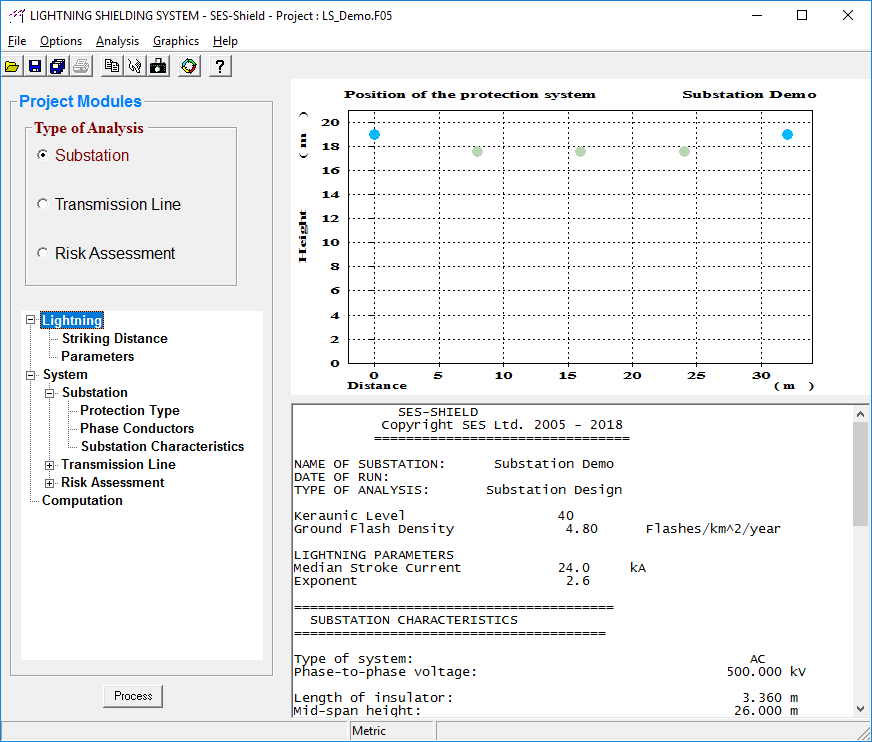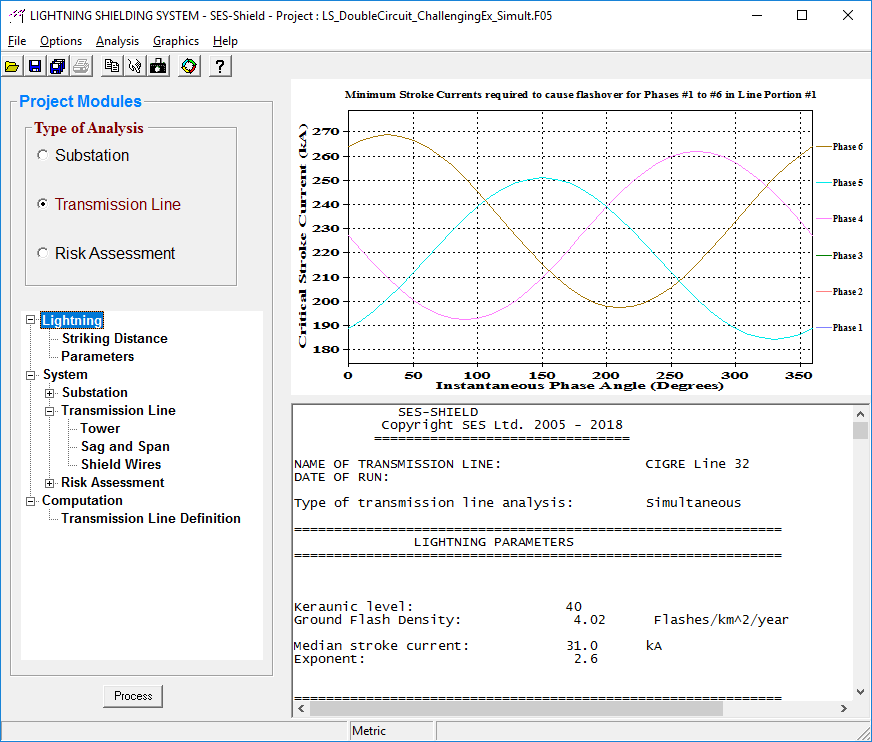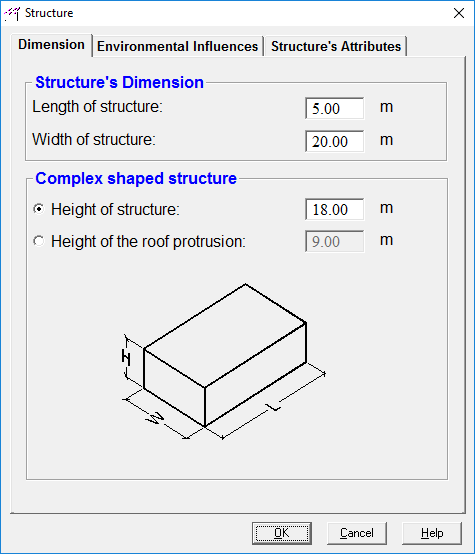SESShield
SESShield is a legacy tool that has been superseded by SESShield-2D, but is still included with most SES software packages. It offers simplified solutions (in comparison with the SESShield-2D and SESShield-3D packages) for determining optimized lightning shielding system heights for substations, providing shielding performance estimates for substations and transmission lines, as well as detailed risk assessments in accordance with IEC 62305-2.
The substation and transmission line shielding analyses are based on the electrogeometric Rolling Sphere theories and methods described in the IEEE 998, IEEE 1243 and IEC 62305 standards.
The main purpose of the design component of this application is to assist the user in optimizing the location and configuration of shield wires and masts in order to prevent the exposure of energized conductors, busses and equipment to direct lightning strikes. The risk assessment module, for its part, provides a formal assessment of the risk of different types of loss pertaining to vulnerable structures.

Main Interface – Optimal Position of the Protection System
Technical Highlights
The design component of SESShield is particularly suited to shielding substations made up of parallel bays. The following figure, for example, represents a substation bay, along which are installed shield wires (dotted red lines) and masts (points a1,…,an and c1,…,cn). SESShield can handle such systems, regardless of whether masts with shield wires or only masts are to be used for the protection system.

Example of Substation for which Shielding Can Be Designed with SESShield
SESShield also explores two lightning protection failure mechanisms associated with transmission lines:
The risk assessment module integrated into SESShield allows you to assess the risks related to lightning strikes on a structure, based on a formal procedure set forth in IEC 62305. The risks include damage to the structure itself, its components and contents, and may also extend to the surroundings of the structure and even involve the local environment. This type of analysis can help in selecting appropriate protection measures that reduce risks associated with lightning to a tolerable level.

Main Interface – Fluctuation of Critical Stroke Current

Input data for the characteristics of the structure
Complex Systems
While SESShield can be used to rapidly design shielding systems for simple substation and transmission line geometries and to carry out formal risk assessments, it cannot be used to conduct risk assessments of structures that need to be divided into multiple zones to be individually assessed. For such risk assessments, it is required to use the SESShield-2D software package, the capabilities of which are more advanced and with more options.
To model arbitrary complex 3D systems and design their lightning shielding systems, the ideal software package is SESShield-3D.

